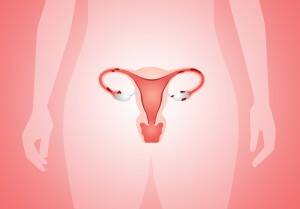There has been an extraordinary amount of media attention on what at first glance seems like an amazing medical breakthrough: the first baby born after a uterine transplantion. While there is reason to celebrate this medical breakthrough, some of the enthusiasm may be overstated. A recent news story from the UK, for example, reported that this procedure provides hope for “tens of thousands” of women to conceive. With a careful consideration of the relevant issues, it will become clear that uterine transplantation should rarely, if ever, be performed in the US, where many states permit the use of gestational carriers for women who cannot carry their own pregnancies. The following facts may help clarify this topic:
- Some women cannot carry a pregnancy – There are a variety of developmental conditions in which a woman is born without a functioning uterus. Other women may have had a hysterectomy, sometimes after a prior delivery. Still others have medical conditions that would make carrying a pregnancy life threatening and are considered contraindications to pregnancy.
- Virtually all of these women can still be mothers with currently available assisted reproductive technologies – IVF can be performed and a single embryo can be placed into the uterus of a carrier who typically has had a healthy pregnancy and delivery in the past.
- Uterine transplantation still requires IVF – Transplant surgeons are unable to recreate functioning Fallopian tubes that can reliably pick up eggs. Just as for women using a gestational carrier, IVF is required to create embryos.
- Risks for the uterine donor- The donor has to go through a major surgery to remove her uterus. Even in skilled hands, a hysterectomy carries risks of bleeding, infection, injury to internal organs, postoperative complications and even death. These risks are likely to be higher than those faced by a carrier with a favorable obstetrical history by going through another pregnancy.
- Risks to the mother -This treatment paradigm requires the mother to undergo IVF, a major surgery to transplant the uterus and then face risk of organ rejection prior to pregnancy. She then likely will require a second surgery to remove the uterus after childbearing is completed.
- Risks to the baby -While the group that pioneered this work should be applauded for doing extensive animal research on this model, there are still many unknowns about the risks to the children born after transplantation. These pregnancies will all be exposed to anti-organ rejection medications. Furthermore, there is concern that placentation and utero-placental blood flow may be suboptimal. Often overlooked in the media coverage was the fact that the first pregnancy was delivered preterm, at 32 weeks gestation, as the mother developed preeclampsia. We do not yet know if other pregnancies will have a high risk of similar or even more severe complications. We also do not know if implantation rates after embryo transfer will be similar. The uterus received was from a 61-year-old donor. While outcomes from oocyte donation suggest implantation does not dramatically decline as women age, there is some evidence that there may be an age-related decline in implantation in the late 40’s and 50’s. This is the age group most like to serve as uterine donors.
In conclusion, the first delivery after uterine transplantion represents an exciting breakthrough. However, there already exists a very safe and effective treatment to help women who don’t have a uterus or can’t safely carry a pregnancy: IVF with transfer to a gestational carrier. Uterine transplantation subjects the donor, the mother and the future children to higher risks. It would be prudent to focus our efforts on removing barriers to the legal use of gestational carrier to help these women safely fulfill their dreams of parenthood.
